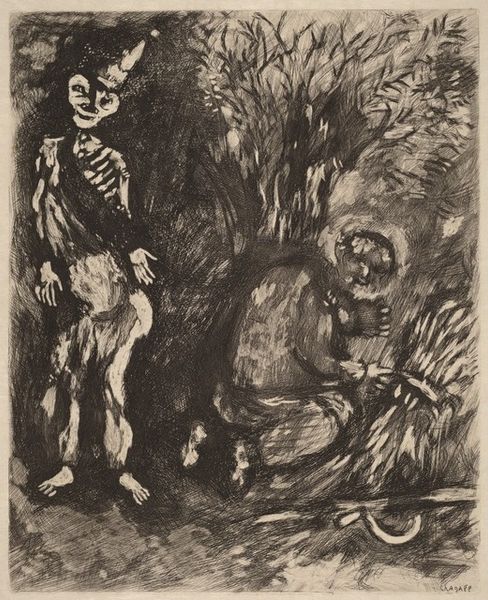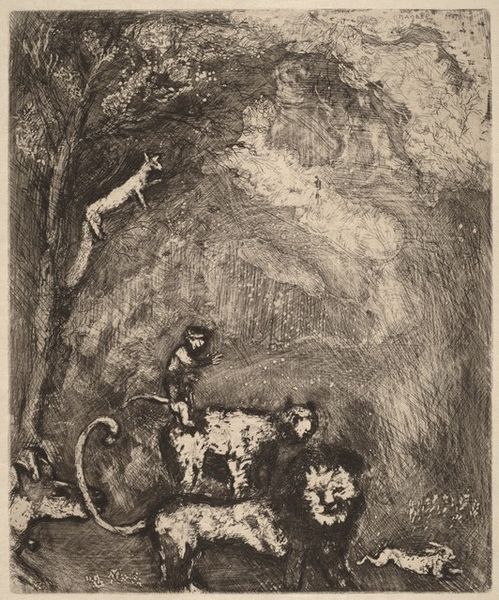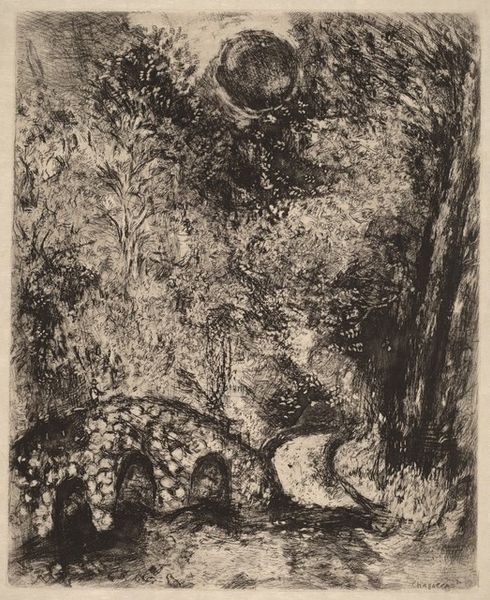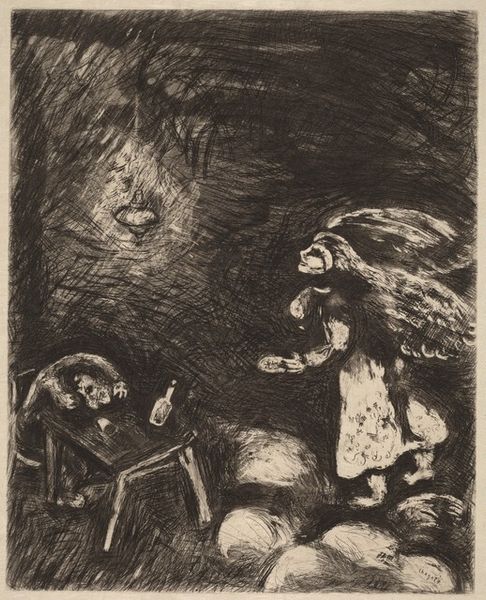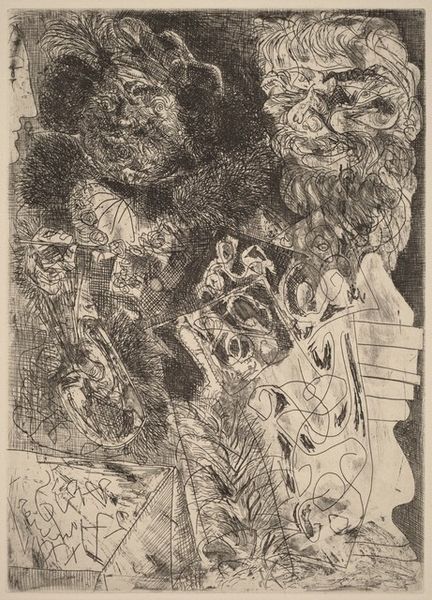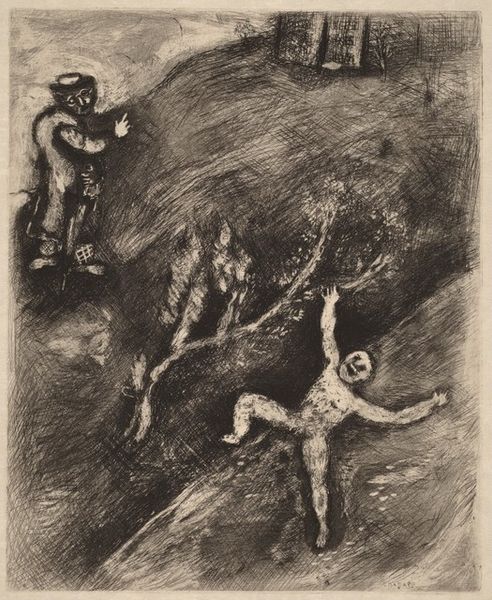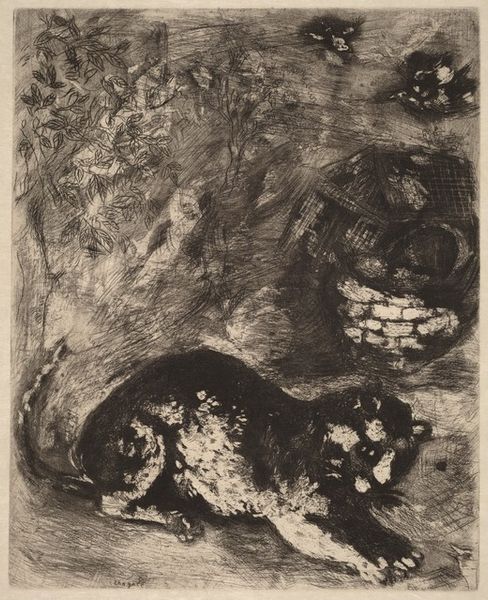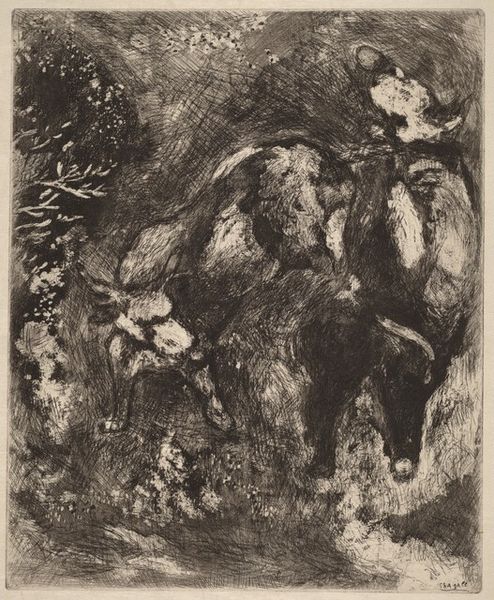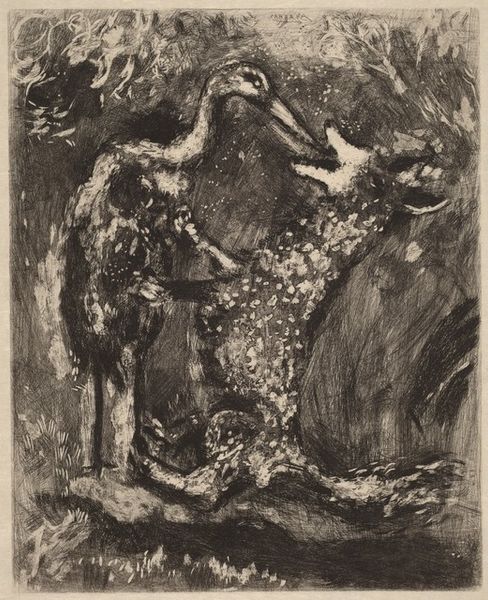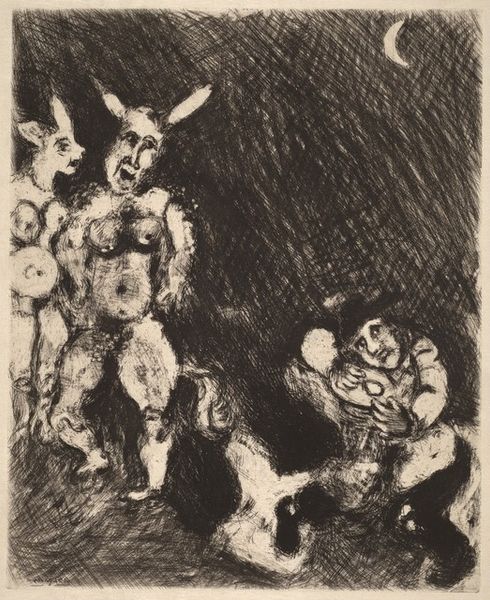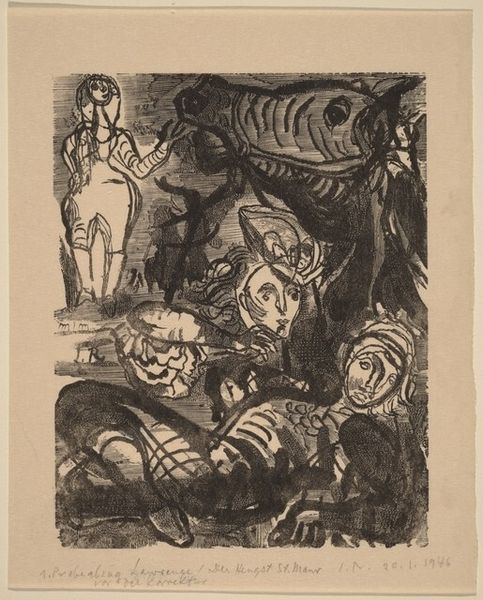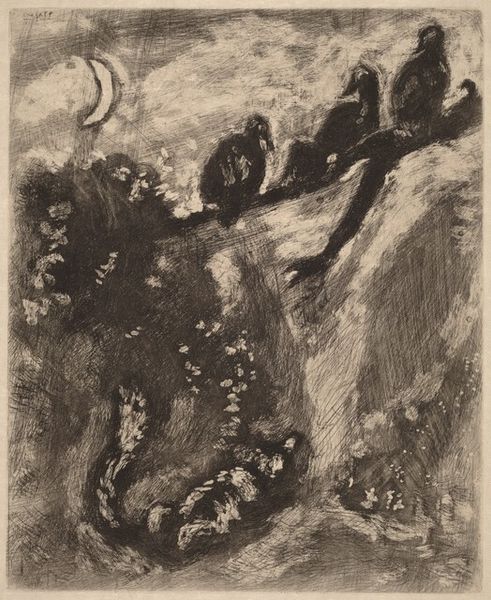
drawing, print, etching, ink, engraving
#
drawing
#
ink drawing
#
narrative-art
# print
#
etching
#
landscape
#
figuration
#
ink
#
expressionism
#
engraving
Copyright: National Gallery of Art: CC0 1.0
Curator: Marc Chagall's etching, "The Funeral of the Lioness," dating from 1927 to 1930, offers a stark and moving tableau. Editor: There's a strange, melancholic air here, even beyond the title's implication of death. The high contrast between the deep blacks and untouched paper create a rather stark, haunting effect, doesn't it? Curator: The composition certainly amplifies that sentiment. Observe the formal arrangement: a central procession almost swallowed by a vortex of dense lines and shading. The use of line directs the eye toward this implied funeral procession, while the foregrounded stag seems almost like a distant spectator, doesn’t it? Editor: I am captivated by how animals populate the scene. The lion, a figure typically representing power and dominance, is central. However, the surrounding assembly bearing what I presume is the lioness appear distraught, anthropomorphic expressions etched into their features. This reversal of expected roles evokes questions of loss, and societal roles being upended, especially considering Chagall's exploration of displacement and grief in his larger oeuvre. Curator: Absolutely. Notice also how Chagall uses hatching and cross-hatching, building depth through a layered, almost frenzied application of ink. This approach yields a unique texture and sense of movement. These myriad individual marks, especially visible in the lower part of the image, paradoxically unite to construct something cohesive: a sense of overwhelming mourning. Editor: The inclusion of the stag is compelling. Deer often symbolize sensitivity and intuition in various cultures. Its prominence here may speak to the necessity of introspection and emotional intelligence in dealing with grief. Moreover, look carefully to the background. There seems to be primitive cave painting of a deer as well. This artistic detail is reminiscent of mourning rituals dating back centuries. Curator: A potent point indeed. To appreciate this print requires one to really dwell on the contrasting elements—the almost chaotic lines, the formal order of the procession, and its implied narrative. Editor: It is an exploration into not only the death of a noble animal but how symbols and rituals, both grand and intimately subtle, become woven into a common vocabulary of grieving. A dark image, no doubt, but richly layered with visual language.
Comments
No comments
Be the first to comment and join the conversation on the ultimate creative platform.
